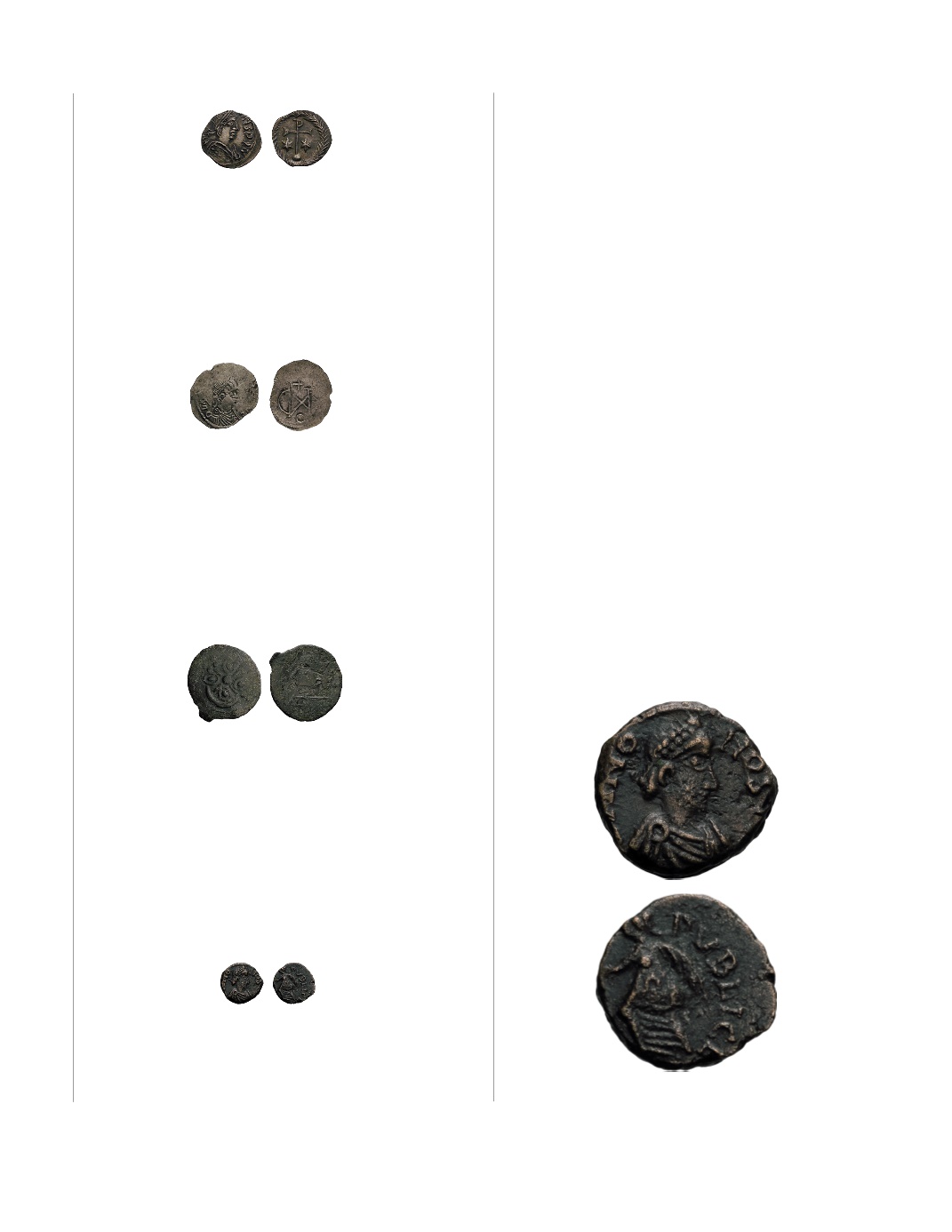

67
276.
Lombards in Italy.
Half-siliqua, 0.64g (5h).
c. 568-690 AD. Obv: D [N]....NVS P P AVG
Diademed bust of Justinian I right. Rx: Cross on
globe between two stars, the upright beam of the
cross formed as a P; all within wreath. MEC 295.
EF
$500
Ex Artemide Aste XXVII, lot 288
.
277.
Gepids, Uncertain king.
120 Nummi or quarter
siliqua, 0.40g (4h). 454-552 AD. Obv: D N... -
...[A]VG Pearl-diademed, draped, cuirassed bust r.,
seen from front. Rx: Monogram of Theodoric, cross
above. VF
$400
Ex CNG E225, 13 January 2010, lot 618, giving
provenance “From the Giamba Collection”
.
278.
Barbarian Kingdoms, Iazyges-Sarmati.
AE 17-18,
1.42g (12h). Obv: Bust left. Rx: Floral motif. VF
$100
Ex Artemide 11E, lot 558 (stated to be extremely
rare, realized 180 euros plus fees)
.
Unpublished Bonifatius DOMINO NOSTRO
Bronze
279.
Bonifatius, Count of Africa, or Vandals in Africa,
DOMINO NOSTRO series.
AE 4, 0.95g (4h).
Fifth cent. AD. Obv: [DOM]INO - NOS[TRO]
Pearl-diademed, draped, cuirassed bust of emper-
or right, seen from front. Rx: [SALVS REI] -
PVBLICE Victory advancing left holding [wreath]
and palm, exergue off flan. Unpublished variety; cf.
RIC 3805 (R2). Good VF
$2,000
Ex CNG 82, 16 September 2009, lot 1079
.
Our coin shows a new reverse legend for this
Victory type in the rare DOMINO NOSTRO series;
on RIC 3805 the legend accompanying a simi-
lar type is instead CARTAGINE PP with pellet in
exergue. However the reverse legend of our coin,
SALVS REI PVBLICE, was used in combination
with the Gateway type in the same series, RIC 3813.
The African origin of the DOMINO NOSTRO series
is proved by the reverse legend CARTAGINE (men-
tioned above) and by the recorded African prov-
enance of some of the specimens, but the date of the
series is difficult to establish. Wroth (BMC p. 19,
note 1) suggested that these coins might have been
struck by Gaeseric (428-477 AD), the first Vandal
king in Africa, or by his successor Huneric (477-484
AD), since neither of these kings placed their own
names on their coins, whereas their successors did
so. Kent (RIC, pp. 233-4) thought that this coinage
might have been produced either before the arrival
of the Vandals, by Bonifatius, the Roman count in
charge of Africa under Theodosius II, who remained
loyal to the legitimate emperor during the usurpa-
tion of Johannes (423-5 AD); or more probably by
the first Vandal king Gaesaric in connection with his
accord with Valentinian III in 442 AD
.
Enlargement


















